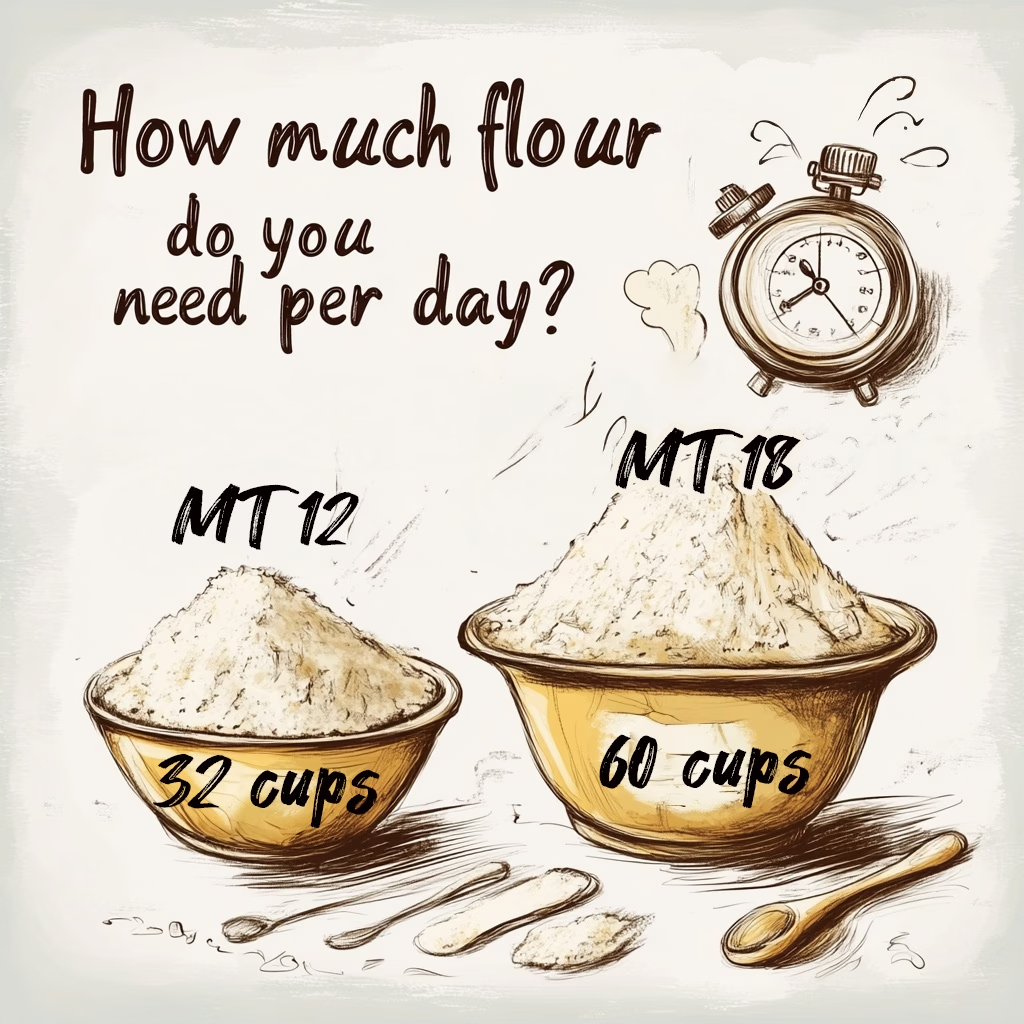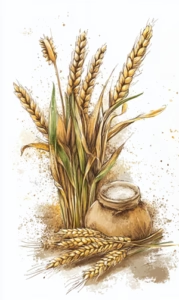
Matching Capacity to Your Daily Flour Needs Selecting the appropriate grain mill is crucial for efficiently meeting your home milling requirements. This guide provides important information to help you find the perfect grinder based on the amount of flour you need daily.
It’s important to know that every grain mill designed for domestic use and built in Europe features a motor with an operating time legally regulated within Europe. This standard operating time is typically around 15 minutes per cycle.
Only mills equipped with special motors designed for continuous operation (mostly found in commercial units) can grind for longer periods without needing a break.
Choose a mill that can grind your daily flour needs in one go.
Pro Tip: If you have specific baking days requiring significantly more flour, consider grinding half the needed amount the day before to manage the volume within the mill’s operating limits.
By considering these capacities in relation to your daily flour needs and the types of grains you plan to mill, you can make an informed decision and choose the grain mill that best suits your household.

 Place the grain in an open container (not in freezer bags or plastic containers) so that no ice film forms on the grain.
Place the grain in an open container (not in freezer bags or plastic containers) so that no ice film forms on the grain.The exact amount of flour a mill can produce in one cycle depends on several factors:
Note: If grinding hard grains frequently is important for you, pay close attention to the specific model capacities below, as these grains are more challenging for domestic mills.
 There are laws of nature that cannot be evaded: Friction generates heat. When milling grain into flour substantial heat development is inevitable too.
There are laws of nature that cannot be evaded: Friction generates heat. When milling grain into flour substantial heat development is inevitable too.
The finer you grind and the harder the grains are, the more heat is generated within the grinding chamber.
Rising heat causes moisture content of the grain to evaporate. The resulting moisture is absorbed by the wooden grinding chamber. This beneficial effect regulates the humidity within the grinding chamber naturally. This is positive effect can not be observed with plastic or metal milling chambers, where condensed water might cause clumping of flour residues and molding.
Wood is a bio-material exhibiting swelling and shrinking with a changing water content in the wood structure coupled with a natural climate regulation effect.
Whenever our wooden grinding chamber has absorbed larger quantities of moisture during long milling, it is recommendable to ease and quicken the escape of moisture by opening the grinding chamber for ventilation.
After a proper drying phase depending on the relative air humidity and temperature of the place the funnel can be mounted again to be ready for another healthy and happy use of your Salzburger Grain Mill.

 Wood is a natural material. In our milling chamber made of natural und untreated wood, the grain can only cause minimal abrasion over many years with a guarantee of no microplastic in your food.
Wood absorbs moisture and releases it in turn.
Wood is a natural material. In our milling chamber made of natural und untreated wood, the grain can only cause minimal abrasion over many years with a guarantee of no microplastic in your food.
Wood absorbs moisture and releases it in turn.Agrisan Naturprodukte GmbH
Gasteigweg 25, 5400 Hallein
Austria
Opening hours:
Monday – Thursday: 09 – 16:00
Friday: 09 – 12:00
Contact:
Phone: +43 6245 83282
Email: info@agrisan.at
Copyright © 2024 Agrisan Naturprodukte GmbH – All Rights Reserved | Web design & development – Pixelstudio Hallein